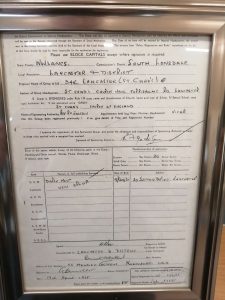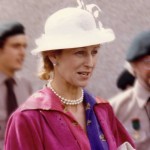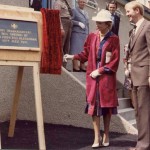1st Lancaster Troop at Hornby, Easter 1909
Links
Awards for Courage & Gallantry
A Concise History of Scouting in the Local Area
The present Lonsdale District was formed at the time of Local Government reorganisation in 1974 re-uniting the two Scout Associations of Lancaster & District and Morecambe & Heysham & District.
The District now covers an area from Silverdale in the North, to Forton in the South and Hornby in the East. It is bounded on the West by Morecambe Bay.
The first President of Lonsdale District, briefly, was Lord Fraser of Lonsdale (1897-1974) the noted politician and campaigner for the blind. The first District Commissioner being Bob Sharrock . . .
For a list of local District Commissioners from 1911 to date, click here
The Earliest Days
Morecambe & Lancaster saw groups of Scouts forming in the first year of scouting 1908. Rev Harold Whittaker, Curate at St John’s Sandylands, received a warrant as Scoutmaster in November 1908 and presumably founded what later became the 1st Sandylands Troop. The group obviously took off with a vengeance as in a newspaper article dated 3 March 1909 it then “embraced altogether over 50 boys, comprising seven patrols, viz.: “Hounds,” “Peewit,” “Owl,” “Cuckoo,” “Kangaroo,” (cycle section) “Beaver,” and “Seal.” Each patrol had its own leader and corporal, and meetings were taking place twice weekly, Tuesdays and Fridays, in the Parochial Hall.”
For the first Scouts in ‘Morecambe’ see also this newspaper article concerning Arthur Peel. Arthur is quoted there as founding the first Troop in Morecambe in 1910 and whilst he is cited as such, and was probably in at the early years, the contemporaneous newspaper article above shows that this honour belongs to Rev. Whittaker and Capt. Arthur Beckwith in 1908.
In Lancaster. Dick Erskine claimed to be the first Scoutmaster there and a photograph shows him with six scouts at Hornby at Easter 1909. Two brothers in this group kept connections with scouting locally until the 1970’s, Laurie Todd (born 1901) and his brother, Hector (born 08 Jan 1900, District Commissioner 1949 -1961). Newspaper reports show that Dick was certainly the Scoutmaster of the 1st Lancaster Troop, which would seem to support his claim but, to date, I cannot find any reference to where the 1st were based.
National organisation was sketchy at first but soon Certificates of Registration were printed, and the earliest surviving was sent to two Patrols of what became the 4th Lancaster (Sulyard Street Methodist) Scout Group registered in November 1909.
Lancaster Gazette, Mar 6th 1912 –
LANCASTER SCOUTS’ DISPLAY
(By 4th Lancaster (1st Wesley) Troop of B.P. Boy Scouts)
During an interval, Scoutmaster R.E.Wright presented an interesting report, in which he stated that the troop was organised from the boys in his Society Class by the late Mr. W. Fryers*, two patrols being registered in October 1909, but the local association had not then been formed, and the warrant was not received from headquarters until May, 1910.
Now the troop consisted of 20 scouts, all over 14 years of age divided into three patrols
* Mr. William Fryers was born 1863 in Lancaster, son of Edward Fryers and Mary Bramwell. In the 1901 census he is living at No. 1 Robert Street, Lancaster; His occupation being a chimney sweep. He married Eleanor Thompson 1884 at St. Thomas’ Church, Lancaster. He died c. December 1909, age 47.
Read Bill Thompson’s account of the early days in a Guardian article published at the time of Lonsdale’s 75th anniversary.
Mr Thompson also wrote a note in the early 1970’s listing the 4th’s early members as follows:-
PL Curlew Patrol: H. Dobson*, E. Smith, A Bills, R. Bratherton, H. Butterworth* PL Peewit Patrol, B. Nelson, Fox, Bowker*, Briscoe, T. Knowles, R. Pullen, J. Crookall, A. Lytham, E. Metcalfe, A. Towers, G. Lowry*, G. Rawe*, W. Thompson*, R. Baxendale, J. Spiers*, S. Kinlock.
Mr R. E. Wright S.M., Mr E. Marsh (Marks?) A.S.M.
* Original members (Herbert Shenton* – missing from the above list)
R. E. Wright records in his log book that “The 4th Lancaster (Wesley) Troop was officially registered at Headquarters, London on October 9th 1909.”
The First Scouts
So, who were the first Scouts in the local area and where were they based?
To understand this you have to appreciate how Scouting evolved in its earliest years. Following the publication of “Scouting for Boys” in 1908 clusters of boys started to form together to put into practice B-P’s ideas in what was basically a manual for self-instruction in observation, tracking and woodcraft skills as well as self-discipline and self-improvement. Groups, as such, only came along afterwards as the scheme took off. As there are no official records of these clusters it is impossible to say who was first. From the records that do exist, namely the warrant issued to Rev. Whittaker (23 Nov 1908) and the contemporaneous newspaper articles, one must conclude that the Group at St. John’s Church, Sandylands might rightfully claim to be the first local Group.
In Lancaster, the documentary proof available is the photographic evidence and the Patrol registration document dated 2 Nov 1909. On that basis the earliest Group would appear to be the 1st Lancaster as their photo is claimed to date to Easter 1909 (Easter Sunday 11 April 1909). It is impossible to ascertain at this stage at what date the clusters of Scouts first gathered in Lancaster. This may well have been sometime in 1908 based on Bill Thompson’s account but this cannot be substantiated.
Official Scout HQ registration only came along later and dates for these vary from the above.
Early Years 1908 – 1914
Click here to view a photo of 4th Lancaster back in 1910. And here to see a photo of them at their first annual camp at Black Dyke Farm, Arnside in August 1910. (From R. E. Wright’s album. Captions read:- “Eleven to a Tent” and “One tent for all”). Another photo from the album, from 1922, illustrates how times have moved on.
Click here to see an Inspection at Derby Road Skerton in October 1910.
And here for a photo on Coronation Day June 22nd 1911. (with Chief Constable Charles Edmund Harriss of Lancaster, on the horse). At Giant Axe.
In 1910 the first seven Troops in Lancaster formed the Lancaster Local Association at a meeting on May 27 with R E Wright as Chairman. According to the Headquarters Gazette (page 16) for July 1910 the Secretary of the Lancaster Association was H. Beeton, 15 Quernmore Road, Lancaster; Lancaster joined already existing nearby local Associations from Barrow-in-Furness and Dalton-in-Furness in the recently formed Scout County of North Lancashire. Troops were also recorded as formed in Morecambe (the earliest registered being 1st (Sandylands) Morecambe under Robert Bright on October 11, 1910) Carnforth (1911), and in villages around such as Caton, Bolton le Sands, Halton (1911), Hornby ‘Castle’ and Wray.
The first King’s Scout badge locally was gained in 1911 by Herbert Dobson M.M. (4th Lancaster) of Dundee Street, Moorlands.
In April 1911, (HQ Gazette 14.04.1911, p27) the counties were reorganised and Lancaster became part of the new South Lonsdale District (District Commissioner W Garnett, Esq., J.P., Quernmore Park, Lancaster; Association Secretary R E Wright, 10 Spring Bank, Lancaster). The HQ Gazette for June 1911, p7, identified the area covered by the new South Lonsdale District as “Parliamentary Division, -Lancaster, with Bolton-le-Sands, Carnforth, and Warton”. The Honorary Secretary was now R E Wright, 10 Spring Bank, Lancaster.”
Girl Guides started nationally in 1910 and there is an interesting insight into early organisation locally in the minutes of the Lancaster & Morecambe Boy Scouts Association.
The first District Commissioner for South Lonsdale was Alderman William Garnett. A photo from 1911 shows Ald. Garnett (seated centre), with Scout Masters Dick Erskine (1st Lancaster), Frederick Wiggans (6th Lancaster, Greaves Methodist) and Richard Price (2nd Lancaster, YMCA) at Halton Vicarage.
An article “Lancaster Association 1912” gives an interesting insight into the organisation of the local association, the Groups then operating and a list of badge examiners at that time.
Scouts were in attendance when His Majesty King George V visited Lancaster in 1912.
This photo of R. E. Wright, from his own album, was taken in August 1914.
War Years 1914-1918
With the outbreak of World War 1 on 4 August 1914 numerous former Scouts were prompted to join the colours along with many Scoutmasters, causing disruption to Scouting activity.
Herbert Dobson M.M. mentioned above tragically became a war casualty on 9 August 1916 at the tender age of 21 serving as a sergeant with the 1st/5th Battalion King’s Own Royal Lancaster Regiment. He is buried at Quarry Cemetery, Montauban, near Albert, France. It is recorded that some 130 former scouts in the district served their King and Country in the war.
Other former Scouts who did not return from the war were Harold Slinger of Hornby, and Robert Bowker, David M. Bratherton, Reginald W. Crayston, Harold Gill and James W. Wilton of Lancaster.
Link here to a photograph of six members of the 4th Morecambe Scouts who enlisted in the 5th Battalion of the King’s Own Royal Lancaster Regiment, for Imperial Service.
Two of these former Morecambe Scouts who fell were Thomas Edmondson and Maurice Hodgson.
This photo from 1917 shows the 5th Lancaster (St Peter’s) with their bugles and drums.
Inter War Development
Tom Helme took over as DC in 1928 and was the first to wear uniform and to take the leader training course.
The Borough of Morecambe & Heysham was formed in 1928 and this perhaps prompted five Troops to set up the Morecambe & Heysham Local Association in 1930 as a separate section of South Lonsdale District under E Barrow as ADC. The Troops were the 1st, 2nd (Sea Scouts), 4th and 6th Morecambe and 1st Sandylands. The Secretary was George S Evenden, born 04 Mar 1902, an optician, who went on to serve Morecambe for a further forty years. Chairman Mr. Joseph Sly, (1880-1952), a Wholesale Linoleum & Carpet Co Director, claimed to have been on B-P’s first Wood Badge course in 1919 and received one of the original beads from B-P’s African necklace. (However, his name does not feature on any of the published lists of attendees at the first course.)
A window in the North side of St. John the Divine Church, Sandylands, Morecambe known as the Carpenter’s Window, which as the name suggests depicts Jesus as a young boy working in his father’s carpenters shop is inscribed “Joseph Sly 1880-1952. Florence Estelle Sly 1893-1952.”
Read “Morecambe Association Formed” – Morecambe Guardian article
And see a photo of the Morecambe Association Annual Dinner of 1939.
From “1932 The Visitor Year Book, Morecambe – Heysham & Lancaster Price Twopence
TOC H SEA SCOUTS (5th Morecambe and Heysham).
G.S.M. E. Wilson. Assistants: Norman Todd, M. Kerr. Instructors: Mr. F. Woodhouse and Mr. T. Norton..”
From “1938 The Visitor Year Book, Morecambe – Heysham & Lancaster Price Twopence
SEA SCOUTS, CUBS, also AIR SCOUTS (5th Morecambe and Heysham). G.S.M. : E. Wilson, 24, Heysham Road. Cubmaster, R. Priestley, and A. Moorhouse, Senior Section C. Bailey, J. Brookes. Headquarters: Toc H Rooms, Back Westminster Road. Meetings: Monday and Wednesday.”
* Edward Wilson born 4 Sept 1899, Sweet, Tobacco and Toffee shopkeeper – married to Frances nee King and son David Edward Wilson b. 1937.
From the ‘Visitor Year Book 1941’:-
MORECAMBE AND HEYSHAM AND DISTRICT BOY SCOUTS ASSN.
President: His Worship the Mayor of Morecambe and Heysham, Chairman: Mr. P. Hughes, Vice-chairman: Mr E. E. Lupton, Treasurer: Mr. H. Parker, Secretary: Mr. G. S. Evenden, Asst. Secy. and Badge Secretary: Mr. J. Dangerfield, Hon. Auditor: Mr. H. Gee, County Representatives: Chairman and Secretary. Executive: Messrs. J. T. Evans, H. Priestley, J. Steele, P. Hughes, E. E. Lupton, G. Whittles, H. Parker, J. H. Shirley, R. N. Todd, K.W. Reed, J. N. Brennan, Coun. F. Clayton, Revs. H. C. Evanson, and R. F. Cookson, Mrs. Peel, and Miss A. Yates. District Scoutmaster: Group Scoutmaster G. Whittles.
Here is a photo of 4th Lancaster camping in 1929 at Shap Abbey.
Several Groups that have a long history started in the 30’s; 1st Carnforth (1929), 4th Morecambe (1930-1995), 16th Lancaster (St Paul’s) (1931), Silverdale (1931?), 17th Lancaster (now 35th) (St Joseph’s) (1931), 23rd Lancaster (Christ Church) (1936), 24th Lancaster (St Chad’s) (1937, now 34th), 11th Morecambe (Parish Church) (1939).

This photo from 1938 shows the 13th Lancaster Rovers outside Springfield Hall. Includes Tom Helme (middle of front row) and Maurice Sharpe (2nd left middle row). And this photo, in the same location, is of the 13th Lancaster Cub Pack and their leaders also in 1938.
List of Morecambe Groups 1939/40
Here is a list of all Lancaster Association Groups compiled in the 1940’s.
Post War Progress


“Extract from “Morecambe & Heysham Scouters Meeting Minute Book 1947”
Names & Addresses of Scouters:
DC Mr S Catterall 5 Marsh Crescent, off Thorpe Avenue, Torrisholme
DSM T S Watson 35 Granville Rd., Morecambe
GSM 4th Mr F Driver Chesterford, Oak Avenue, Bare
SM 5th Mr G Colwill 143 Heysham Rd., Morecambe
SM 8th Mr J Thompson 15 Station Rd., Hest Bank
ASM 8th Mr D Chitty 13a Station Rd., Hest Bank
GSM 13th Mr J Dobson 10 Cedar St., Morecambe
ASM 16th (J J) Barker 17 Sefton Rd.
GSM 16th Bruce The Vicarage, Russel Drive., Torris
SM 11th Mr S Smith 17 Birklands Ave
GSM 1st Antenen 13 King St. 2021
Scouters Secy: H Axe 46 Russell Drive, Torrisholme, Morecambe
SM 1st Harmsworth 16 North St
Here, a list of Lancaster Groups in the Annual Report of 1950 – 1951.

Photo shows l to r: R.E.Wright, Maurice Sharpe, Malcolm Bishop (13th Lancaster), Jack Bishop, Frank Hayton
The Visitor Year Book from 1958 lists the Morecambe & Heysham officials and Groups.
The Official Handbook of the Morecambe and Heysham and District Boy Scouts Association – 1960 contains an article listing ‘the beginning’.
Here is a photograph from 1960 showing 4 Scouts from the 13th Morecambe Troop (St Mary’s) receiving Queen’s Scout Badge certificates from Max Melling (DC). This photo from around the same time shows the 13th Morecambe at the campsite behind the Globe Hotel in Overton, I think.
Four Scouts from the 3rd Lancaster (RGS) Troop also received their certificates for the highest training award in the summer of 1963. Seven Scouts from 13th Lancaster did it again in 1965.
Ronald Wild, an Assistant Scoutmaster at 23rd Lancaster, was leaving Lancaster for Australia in March 1963. This photo taken in the Gregson Institute shows the Group’s Scouts and Cubs together with a number of leaders – standing back left are Frank Hayton (13th Lcr), Roy Walker and Brian Ellwood, and back right Geoffrey Shackleton (ADC Scouts) and Ronald Wild (not in uniform). Also, seated – Dorothy Holden, Julia Beck, Rev. John Mullineaux, Arthur Wild, Gwen Gedge and Carol Lofthouse.
Here is a list of Scout Group Registrations.
Here, from the District archives, is a design for a camp site pennant for Littledale drawn by a Senior Scout from 53rd Lancaster, Danny Parsonage. (Lancaster Guardian 4 March 1938 – “Two other new Rovers are D. Parsonage and B. Hall, of the 4th Lancaster Crew, invested at Aldcliffe Road and Applehouse respectively, the latter at a “Rovers’ Own” service, conducted by ADC R. E. Wright.”
Scouts took part in a cooking competition at SilverHelme camp site in 1963. This photo shows Senior Scouts from the 1st Slyne Troop being judged by Mrs Melling, the DC’s wife, and Mrs Dahl, the Field Commissioner’s wife.
Here is a photo of the Morecambe & Heysham Local Association officials in 1965.
The Scorpio Venture Scout Unit organised a novel regatta on Sandylands pool in 1969 for Troops from Morecambe. Events included a boat race for craft constructed from copies of the Morecambe Visitor, a balloon race, a raft race, slippery pole and log rolling. The boats had to be built from copies of the Visitor with suggestions to use a suitable former, such as a tin bath, and build up layers of paper with a wallpaper adhesive. No cardboard, wire or wooden reinforcement was allowed. The boats apparently stood up well to the severe test. This photo shows David Lister merrily paddling his way across the pool.
HRH Princess Alexandra honoured the District in 1981 when she officially opened the new headquarters building at 16th Morecambe in Torrisholme.
The Chief Scout’s Challenge, (now sadly abandoned), was a special challenge from the Chief Scout, Major-General Michael J. H. Walsh, to all scouts aged 14 – 15 ½. As one of a team of four to five scouts you were challenged to plan and take part in a three day expedition in unfamiliar country to carry out a project. Your team had to be be entirely self sufficient throughout the three days, carrying their own tents, food and being able to cope with their own first aid.
In 1983 the 16th Morecambe Troop was the first in the County and the District to achieve the award. Here is a photo and a copy of their certificate.
 The District Team 1985
The District Team 1985
l to r
John LePage ADC (Venture Scouts)
Peter Ellwood District Commissioner
Eric Wall ADC (Cub Scouts)
Kitty Jackson ADC (Fellowship)
Geoff Westwood ADC (Scouts)
Peter Hewitt 1935-2016 was a great friend and servant of local Scouting for many years. His daughter has provided a number of press clippings from Peter’s collection from the 1980’s and 1990’s, which many will find of interest I am sure.
(For a full history see “Scouting in Lonsdale 1908 -1999” – Peter S Gedge/Peter Hunt, available in DHQ)
Additional and updated information by Alan Hague – alan.hague@lonsdalescouts.org.uk
Lonsdale’s connection with the Cornwell Badge
Morecambe Bay District Rover Crew 1961-1967
Local Scouting related Newspaper Reports 1907-1990
Patrol series of books – The Patrol goes to camp 1960’s
All photos © Lonsdale Scouts Archive Collection or as individually credited





